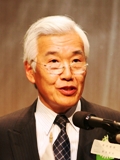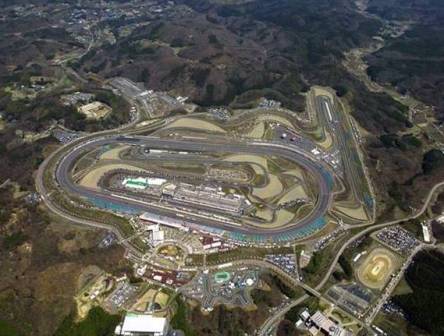��Rotaract Week�� Meeting
��Thirty-day camp to Raise Strong Kids��
March 12, 2008
Mr. Ikuo Shimizu,
Former President of Mobilityland Corp.,
Honorable Associate of Honda Motor Co., Ltd.
 ��Twin Ring Motegi, where ��Hello Woods�� is located, is a facility with 640 hectares of total area, and a development area of 280 hectares. The international circuit is at the central area of the premises, a traffic education center, hotel, the Honda Collection Hall and Hello Woods are located in the middle a forested-village of about 660 hectares.
��Twin Ring Motegi, where ��Hello Woods�� is located, is a facility with 640 hectares of total area, and a development area of 280 hectares. The international circuit is at the central area of the premises, a traffic education center, hotel, the Honda Collection Hall and Hello Woods are located in the middle a forested-village of about 660 hectares.
��Twin Ring Motegi is involved in various social activities based on the keywords: sustaining the environment, supporting education for the next generation, and community interaction.
��Hello Woods opened as a ��place for learning and play�� in July 2000.
��The Motegi Forest that the facilities and programs of Hello Woods use is a 430 hectare-forest composed of wooded areas made up of deciduous and coniferous trees, with 11 streams and 3 areas (North, South, and East). At Hello Woods activity programs to experience playing in the forest, craft making, outdoor living, making the forest and various eating experiences are offered.
��The purpose of the ��30 day camp To Raise Strong Kids�� is to give children the opportunity to experience and discover new things for themselves, in an environment where people can enjoy interacting with nature. The camp staff will offer some guidance, but it will ultimately be the children that make decisions, and are in charge of carrying out camp events. The concept of the camp is that the adults just offer the place and the opportunities for the children to use to their advantage.
��In 2005, 11 boys and 3 girls ranging in age from 10 to 13 years old, from the fifth to seventh grades, participated in the camp. The children were tested right from the start of the camp on July 22. The first activity for the children was to start a fire and cook rice in a camping pot. The group that year took a long time trying to start a fire. They finally got the fire going, and were able to eat their meal after many attempts, but by that time this happened it was already past midnight and the children all had blisters all over their hands. I think that from this experience they learned from the heart the difficulty in doing something that is easily taken for granted such as eating a meal.
��The children also did many other fun activities such as flying in a hot-air balloon.
��The camp smoothly proceeded from there, and around the time the children became used to things, they went mountain trekking in the Sanbon Yarigatake Mountains, at a height of 1,917 meters in the headwaters of the Naka River. After exploring the headwaters, the group met a terrible thunderstorm on their way down the mountain. The original route they took could not be used due to the torrential rain, so they went down the north side of the mountain and reached Fukushima Prefecture. This experience gave them the opportunity to learn how to respond flexibly to the development of such sudden events. That night, there was another unexpected incident when the river water rose to such dangerous levels that the children had to take down their tents and evacuate to a safer place. This gave them an opportunity to experience risk management and how to respond to emergencies. The following day was canoe training. They learned the survival techniques needed for escaping from an overturned canoe.
��The largest program of the camp, which takes place around the twentieth day, is the three-day, 65 kilometer journey from Motegi Town in Tochigi Prefecture to Nakaminato in Ibaraki Prefecture. With 7 kilometers left in the trek, one child became so worn out that he could not move. The children got together and took a long time discussing a solution. What they decided upon was to take turns carrying the child on their backs the last 7 kilometers. Although they were behind schedule, they successfully reached their goal at the river-mouth at Oarai Aqua World.
��The closing ceremony of the thirty-day camp is held together with the parents and family members of the participants. The children were unanimous in their comments on realizing the importance of communication and holding group discussions.
��Humans have built their culture within nature. That nature is what raises the children to be well-equipped with the strength and diligence to become leaders of society. Under the modernization and westernization begun in the Meiji Era, and increasingly in the sixty years since the Second World War and particularly following the bubble era, Japan has abandoned the values of our ancestors. We must realize that we have yet to establish the culture and environment within which to raise strong children who will become the bearers and leaders of the future in this globalized economic society.
��Japan lacks an abundance of natural resources, and therefore excelling in technology, international communication and diplomacy are the most significant issues for the country. I hope that the activities hosted at Hello Woods will provide a place for communication, and be of some help in raising the children who will become our future leaders.
